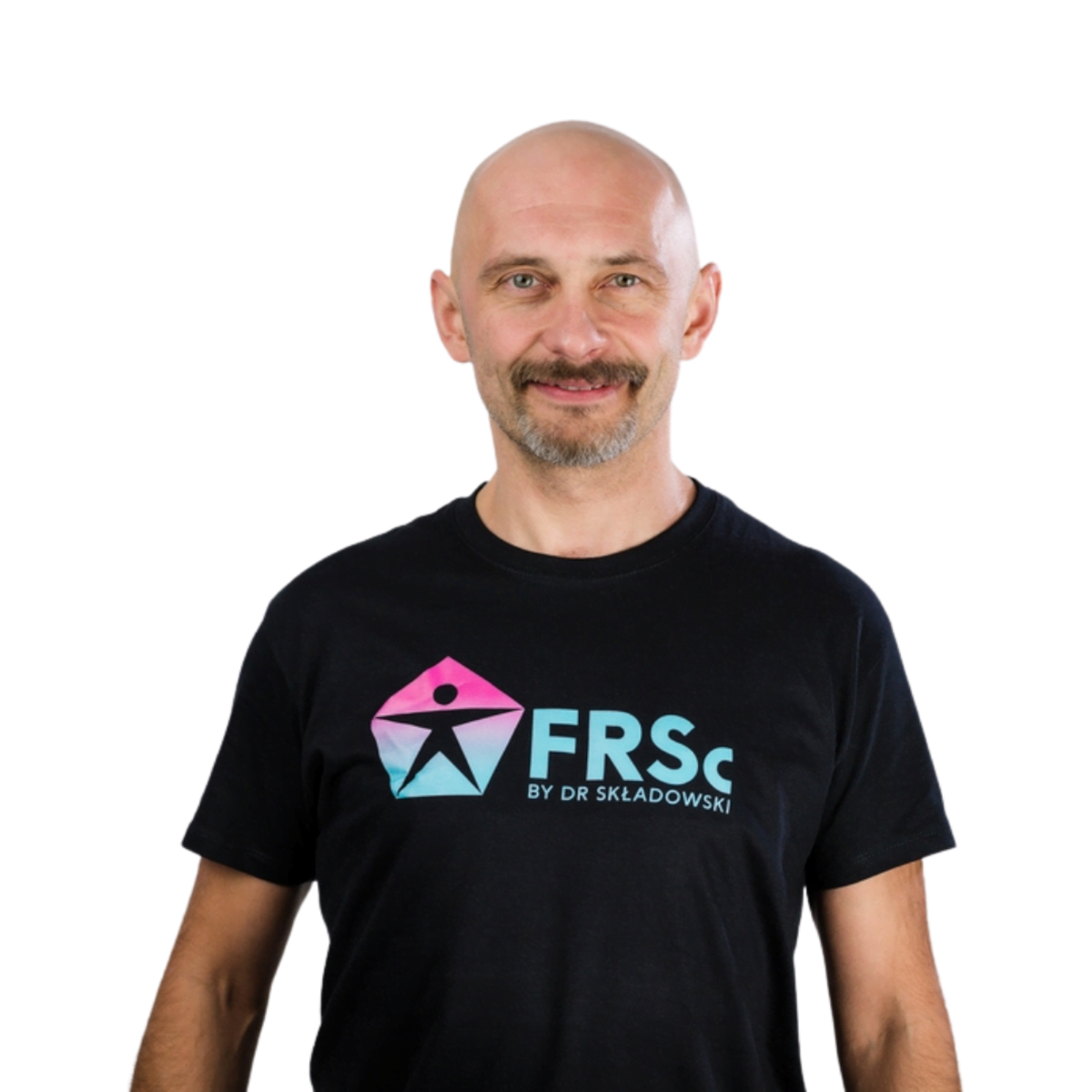Grand Master
Radosław Składowski
I am an orthopedic doctor (doctor since 1995, orthopedist since 1999). I have been working professionally since 2000 at the field of manual medicine. Since 2006, I have added clavitherapy and its derivative to my manual medicine methods. The basic principle of my therapy is the withdrawal of diseases of the musculoskeletal system by repairing the functions whose loss or disorder led to these diseases. Regaining the correct function leads to recovery, sometimes also from those diseases that are considered incurable.

Media
Where I came from?
My dreams of quickly and effectively "fixing" a person date back to my early teenage years. My visions of myself as a bendy professional preceded the decision to choose medicine as a field of study. I studied at the Faculty of Medicine of the Medical Academy in Wrocław in the years 1989-1995. It was then that my dreams of practicing the profession of a manual therapist became concrete, which in those years did not officially exist in Poland.
At that time, I did not know anyone who organized training in this field, so I devoured all the books on the market related to the subject that interested me. I visited folk chiropractors, physiotherapists, and vertebral realignment doctors to see their techniques.
Not being able to make manual medicine my main occupation at that time, I started working in 1995 as a junior assistant at the Trauma and Orthopedic Department in Kędzierzyn-Koźle. In 2000, I started my first official training in the field of manual medicine with Zbigniew Arkuszewski, in the same year I established a private medical practice, in which the main goal was to practice manual therapy in disorders of the musculoskeletal system.
In 2002, I met Grzegorz Jabłoński, a manual therapist with a university education, a man who, thanks to a completely new approach to manual medicine (simultaneously based on mechanics as well as on subtle physiological phenomena), it destroyed my whole vision of medicine concerning the musculoskeletal system. The effectiveness of his treatments seemed shocking to me at the time. My contacts with Grzegorz lasted intermittently until 2007. At that time, the activity of my office significantly increased, so in 2004, unable to reconcile the functioning of private practice with work in the orthopedic ward, I resigned from the latter, taking valuable experience gained from it at the operating table, concerning the anatomy of the musculoskeletal system, which no atlas offers.
Manual Medicine courses - How all of it started?
In 2006, I conducted my first training in manual medicine, which was "ordered" by a group of naturopaths associated with Zdzisław Hudak and Ryszard Ulman. In the circles of naturopaths, I first came across clavitherapy, which they also call clavipuncture or clavipressure. Even then I was struck by the effectiveness of these techniques, although I knew that the most developed version of clavitherapy was used by Dr. Ferdynand Barbasiewicz. So in 2008 I went to his course. Applying the knowledge and techniques gained during the course, I was simply shocked by the effectiveness and possibilities. I also had to re-examine my understanding of physiology. F. Barbasiewicz's method, however, had its disadvantages related to the length of the procedures and the need for fluent knowledge of Chinese medicine, therefore this version gradually decreased its share in my work with patients.
W latach 2008-2014 na bazie rosnącego doświadczenia gabinetowego w pracy manualnej i narzędziowej, na bazie wielu prób i błędów, odkryć, analiz i podsumowań stopniowo mój styl pracy terapeutycznej zaczął przyjmować cechy systemu. A ponieważ w całym tym okresie nieustannie prowadziłem szkolenia, wypracowany system terapeutyczny na bieżąco formował autorski kurs medycyny manualnej, oparty na wyodrębnieniu pięciu układów regulacyjnych. Z czasem system ten zacząłem nazywać Five Regulatory System concept (ang. Five Regulatory Systems concept, FRSc). A simplified or summarized version of the course, in which most of the activities are reduced to tool techniques, is the course of pinotherapy. Later, I added a needle therapy course to the above-mentioned ones, because I believed that by separating needling techniques from the entire concept of manual medicine, it is possible to present dry-needling therapists with much broader applications than just trigger points according to Travell and Simons.
What made me a therapist?
A sense of observation. The need for observation. And drawing conclusions. Part natural, part trained. First, I watched Masters in their field, extremely effective professionals from various industries, but with a very similar way of reasoning and drawing conclusions:
Today, after more than 25 years of spinning in orbit of manual medicine, I can say that my main teacher is my patient, especially the difficult one, the one whose problems, in the course of many searches and discoveries, I managed to solve.
What made me a teacher?
First the accident. Someone looked from the side as I work and suggested course for a group of volunteers. Then my observation about myself; that in addition to the transfer of knowledge and skills, I manage to awaken passion, self-confidence, courage and responsibility in the adept. It's nice to watch how the initially terrified novice becomes from meeting to meeting a "fighter" who challenges the most difficult clinical cases. And besides, I like to watch my students surpass me…

